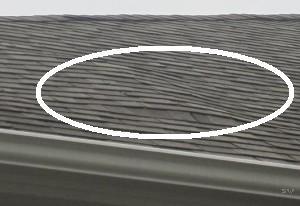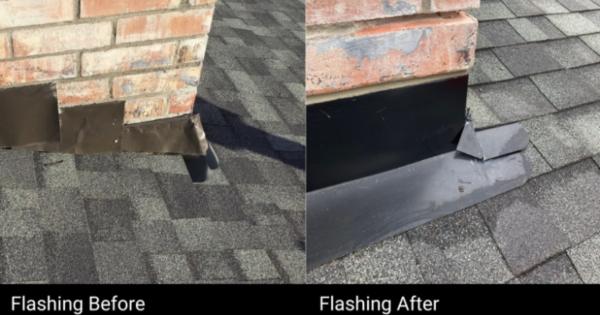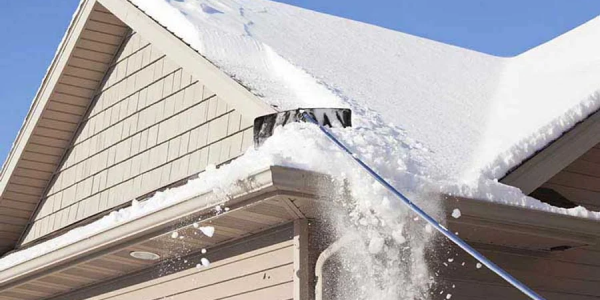What Can Happen to a Home When the Roof Fails

If you wait for a roof to break down before you replace it, this could lead to some serious issues in your home that could cost you.
Eventually, every roof will fail and need to be replaced or repaired in some form. The roof endures all kinds of elements season after season, year after year, and the materials eventually wear down.
The typical lifespan of a roof is anywhere between 12 and 20 years depending on the roofing materials used.
It is wise to get a roof inspector to check out the roof annually, especially if the roof is older or if you suspect it could have problems rather than waiting until it fails to do something about it. If you wait for a roof to break down before you replace it, this could lead to some serious issues in your home that could cost you.
Leaks
The main problem that results from a damaged roof is leaking into the home. When the roofing materials erode, bubble up, crack or curl, this leaves openings for water to get into. Once water gets in, it can lead to a whole host of hazards.

This water will then seep into the attic and begin wreaking havoc in there where it will likely go undetected for a long period of time, since that room is not frequently visited in most homes. The water can also make its way down the walls in the lower levels of the home, ruining wood, drywall, and other materials in the process.
Water damage
Leaks from the roof can lead to a significant amount of water damage in a short period of time. For hard surfaces, water damage is not as much of a threat, since water can simply be wiped off. However, for porous materials, it could mean irreparable damage. Here are some materials that are most at risk of water damage from roof leaks:
- Wood framing: The wood can start to wear away if the damage goes unnoticed for a long time.
- Drywall: Throughout the home, the drywall can take on water and begin to warp and require replacement.
- Wood flooring: Water damage can ruin wood flooring. It can cause the wood to warp and buckle.
- Carpeting and furniture: Porous materials like carpeting and the fabrics and wood that make up most furniture are at high risk for not surviving water damage.
- Irreplaceable items: Things like photos and memorabilia that are often stored in attics or basements could be ruined.
- If you notice any signs of bubbling or warping on ceilings, walls or flooring, this could be a sign that water is coming through somewhere where it should not be.
Mold growth
An unfortunate side effect of the infiltration of moisture in a home is mold. Mold spores are everywhere, both indoors and outdoors, and all they need to grow and flourish is a little bit of moisture with not a lot of ventilation. This is why water leaking into a room that does not get a lot of attention like an attic can quickly turn into a full-fledged mold infestation. Other rooms that are vulnerable to rapid mold growth include bathrooms, kitchens, and basements.
When dealing with waterlogged materials, here is how to reduce the risk of or stop mold growth altogether:
- Cut off the moisture source. If the source is leaking from the roof, then this cannot be accomplished until it is repaired and the leaks cease. Dry up any water in the area.
- Ventilate the room or bring in dehumidifiers and fans.
- Take wet materials outside to dry more quickly.
- Clean up any signs of mold using soap and water. If mold has developed on porous materials like wood and drywall, they may need to be removed and replaced.
- If the mold problem is significant in size, there are mold removal professionals that can eradicate the mold safely and effectively.
- Not only can mold damage your belongings and home’s building materials, but it can also have a negative effect on the health of those living in the home. The sooner you act, the safer your home and your family will be.
Clogged gutters
Worn down and cracked shingles can roll down into the gutters and clog them up. Clogged gutters may seem like a minor issue, but they can actually lead to overflowing water rolling down the side of a house and eroding mortar, wearing away wood around doors and windows, putting pressure on the foundation causing cracks, and a significant amount of water damage.
Regularly cleaning out gutters and checking those gutters for the types of materials collecting inside of them is key to keep a home running smoothly as well as early detection for some roof issues.
A failing roof can be extremely destructive to a home. By staying on top of your roof’s health through inspections and regularly checking for signs of water infiltration around the home, you can avoid a lot of unnecessary home damage and repair and replacement costs.
Have a question? AskARoofer.
Find your local roofing contractor in the RoofersCoffeeShop® Contractor Directory.













Comments
Leave a Reply
Have an account? Login to leave a comment!
Sign In